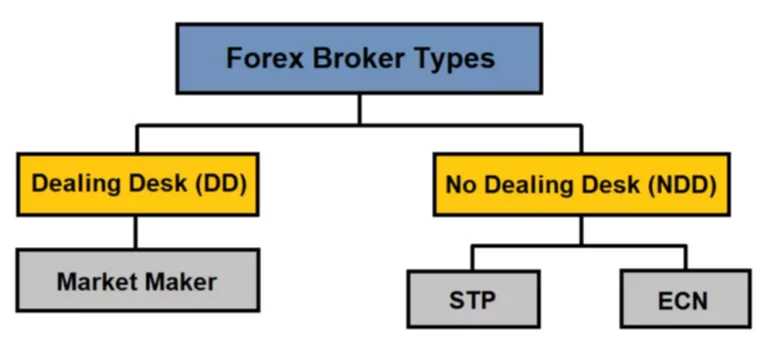The effectiveness of a derivative hedge is expressed in terms of its delta, sometimes called the hedge ratio. Delta is the amount that the price of a derivative moves per $1 movement in the price of the underlying asset. Even if you make a profit in dollars, your investment in euros can decrease in value. By hedging you can also protect yourself from a strong market decline.

I end up in a loss in 3 out of 4 scenarios, however my loss is limited to 15$, whereas profit is unlimited. Stack Exchange network consists of 183 Q&A communities including Stack Overflow, the largest, most trusted online community for developers to learn, share their knowledge, and build their careers. From the example above, we can see that Elsa’s trade was internally offset by Ariel’s trade. The difference would leave the broker with a net long 2 million GBP/USD position. This process of aggregating trades is known as Internalization. All expressions of opinion are subject to change without notice in reaction to shifting market conditions.
But Wait, What is Hedging Anyway?
A well-diversified portfolio generally consists of multiple asset classes with many positions. If you wanted to hedge the equity portion of your portfolio, you’d have to hedge every equity position—which would be extremely costly. To help you evaluate a company’s use of derivatives for hedging risk, we’ll look at the three most common ways to use derivatives for hedging. On the other hand, the trading volume of derivatives has escalated rapidly, and non-financial companies continue to purchase and trade them in ever-greater numbers.

Regardless of what kind of investor one aims to be, having a basic knowledge of hedging strategies will lead to better awareness of how investors and companies work to protect themselves. The best way to understand hedging is to think of it as a form of insurance. When people decide to hedge, they are insuring themselves against a negative event’s impact on their finances. However, if a negative event does happen and you’re properly hedged, the impact of the event is reduced. Although it may sound like the term “hedging” refers to something that is done by your gardening-obsessed neighbor, when it comes to investing hedging is a useful practice that every investor should be aware of.
Look beyond financial hedges
On the other hand, the customers who are B-Booked will generally be small orders, mostly losing trades, and the broker can warehouse the market risk since the risk is small because the trade size is small. If you want to employ this strategy, first you need to fully understand what “delta” is and how to calculate it. You cannot complete hedge away price risk of a sold call simply by buying the underlying and waiting. If a broker has customer orders that can offset each other partially, then the broker is left with a much smaller net position that leaves the broker exposed to market risk. Hedging and protective strategies generally involve additional costs and do not assure a profit or guarantee against loss.
Companies also limit their risk exposure by hedging their positions. For example, an aerospace company is heavily dependent on the price of kerosene. When this fuel suddenly becomes much more expensive, the company’s profitability is compromised. A commercial hedger is a company or producer of some product that uses derivatives markets to hedge their market exposure to either the items they produce or the inputs needed for those items.
You have a maximum earnings-potential of 55 dollars (strike of investment of 100 + option of 5) but you have a risk of losing 95$ (investment of option of 5). Elsa went long 100,000 GBP/USD, while Ariel went short 100,000 GBP/USD, so the broker’s risk exposure is zero. If the broker took advantage of the fact that the trades happened at the same time and didn’t hedge with an LP, then it wouldn’t have paid that cost. What remains exposes the broker to market risk which is why it’s also called “residual risk”. For example, the broker can see in its book that it has a total of 10 million units of long GBP/USD and 8 million units of short GBP/USD positions. Let’s say you own a $1,000,000 equity portfolio that is highly correlated with the S&P 500 and you’re concerned that the S&P 500 may sell off substantially over the next three months.
Hedging With Derivatives
If, on the other hand, a company finds that it can finance its strategic plans with a high degree of certainty even without hedging, it should avoid (or unwind) an expensive hedging program. Due to the high levels of ambiguity at which brokers tend to operate, we hope we have shed some light on what happens “behind the scenes” regarding how they manage their risk and make money. Unless stated by your broker, it’s important to note that a broker’s hedging practice may not totally eliminate risk to its customers. This is important to know because posting margin means the broker has to put up cash (“margin”) with LPs they trade with.
Before trading options, please read Characteristics and Risks of Standardized Options. Supporting documentation for any claims, if applicable, will be furnished upon request. But it’s important to know that hedging can be a double-edged sword—specifically, if the investment used to hedge loses value or it negates the benefit of the underlying increasing in value. This hedging policy gives aggregate customer exposure the opportunity to offset itself before being hedged in the underlying institutional FX market.
- In the scenario you have stated, maximum profit that could be made is 55$, however risk is unlimited.
- The company would be in deep trouble if the price of agave were to skyrocket because this would severely impact their profits.
- Then you start looking for a stock that you think is slightly overvalued.
- Our Stock Screener matches your ideas with potential investments.
The A-Book model is a much lower-margin business than B-Book and requires brokers to focus on customers who trade frequently in large quantities while trying to keep costs as low as possible. Aggregating multiple customer trades is a common practice for brokers since trading with most LPs requires a minimum trade size, usually at least 1 standard lot or increments of 100,000 units. When a broker matches one customer’s trade with another customer’s, it removes the market risk in a similar manner to hedging the trade with an external liquidity provider (LP). For example, some customers may buy GBP/USD, while others may sell GBP/USD. Different traders have different opinions so there may be instances where opposing trades can be “matched” or “offset” with each other. A portfolio hedge would be considered effective if its value holds relatively steady in the face of dropping asset prices.
Strategically diversifying a portfolio to reduce certain risks can also be considered a hedge, albeit a somewhat crude one. For example, Rachel might invest in a luxury goods company with rising margins. She might worry, though, that a recession could wipe out the market for conspicuous consumption. One way to combat that would be to buy tobacco stocks or utilities, which tend to weather recessions well and pay hefty dividends. The specific hedging strategy, as well as the pricing of hedging instruments, is likely to depend upon the downside risk of the underlying security against which the investor would like to hedge.
Hedge Definition: What It Is and How It Works in Investing
Let’s dive into the world of hedging and uncover how brokers manage market risk. Companies should hedge only exposures that pose a material risk to their financial health or threaten their strategic plans. An integrated aluminum company, for example, hedged its exposure to crude oil and natural gas for years, even though they had a https://www.xcritical.in/ very limited impact on its overall margins. Yet it did not hedge its exposure to aluminum, which drove more than 75 percent of margin volatility. Large conglomerates are particularly susceptible to this problem when individual business units hedge to protect their performance against risks that are immaterial at a portfolio level.
If you want to hedge this directional risk you could sell 30 shares (each equity options contract is worth 100 shares) to become delta neutral. Because of this, delta can also be thought of as the hedge ratio of an option. Portfolio managers, individual investors, and corporations use hedging techniques to reduce their exposure to various risks. In financial markets, however, hedging is not as simple as paying an insurance company a fee every year for coverage. In some cases, a company’s net economic exposure can be lower than its apparent nominal exposure.
Once these rules and criteria are set, the broker will have an “order routing system” or “order execution engine” whose purpose is to manage orders by sending them to A-Book or B-Book automatically. The opposite is true as well – as the price of the underlying increases, you’d buy more of the underlying to maintain a “delta neutral” position. Personal Finance & Money Stack Exchange is a question and answer site for people who want to be financially literate.
Hedging a share
Assume the SPX is at 4,150 and the Cboe Volatility Index (VIX)—the average implied volatility of SPX options—is at ~17. The cost of one SPX 4,150 put option that expires in approximately three months is $10,900 ($109 ask price x 100 multiplier, excluding commissions). Even after natural hedges and secondary effects, most multinational corporations are exposed to some form of foreign currency risk.
For instance, Kellogg’s uses corn to make its breakfast cereals. It may therefore buy corn futures to hedge against the price of corn rising. Similarly, a corn farmer may sell corn futures instead to hedge against the market price falling before harvest. To protect against Broker Risk Management the uncertainty of agave prices, CTC can enter into a futures contract (or its less-regulated cousin, the forward contract). A futures contract is a type of hedging instrument that allows the company to buy the agave at a specific price at a set date in the future.
